Elements of the research project
1. Integration with the curriculum
In recent years, the concept of cultural heritage protection and deep-rooted education at school is also integrated with related teaching activities. Through this research project, we had the opportunity to explore and learn more about ancient architecture-related knowledge from the historic and cultural aspects of learning, architectural analysis of the type and function of 0-understanding, historic site maintenance techniques and environmental awareness, recognition of the meaning of the value of historic sites, the application of the combination of school learning, which all have deeply tangible and intangible educational values in life.
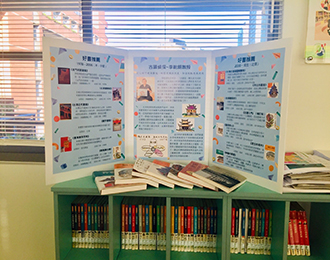
Source: Detective of Historic sites

Source: Detective of Historic sites
Suppose we want the public to understand and love historic sites. In that case, we must search for meaningful information and interesting legends from relevant books or on the Internet, use the reporting skills we learned in class to summarize and arrange the knowledge systematically, and then use charts or graphs to present the results (the organized data). In this study, we interviewed Professor Li, visited the historic sites, studied books, looked up information on the Internet, and promoted practical activities to give us a deeper understanding that historic sites are not just buildings. Instead, they are the stage for all legendary stories, and we want to promote them to more people through the Internet blog platform; in addition to promoting them in school, since we have some knowledge taken from the Internet and hope to contribute it to other online users as well.
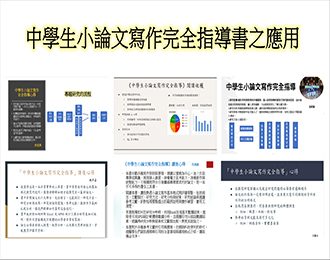
Source: Detective of Historic sites
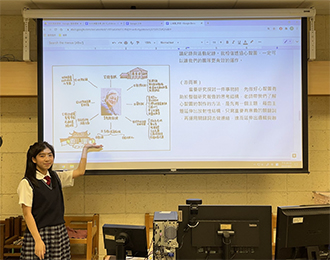
Source: Detective of Historic sites
2. Use of Information Technology
| Computer Related Software | |
| Line、Instagram | Event Publishing Platform |
| Windows 10 Google Chrome |
For searching and collection relevant data, media, self-learning topic of the research project |
| Microsoft Word 2016 | Consolidate the texts, experiences and reflections of the thematic study |
| Microsoft Excel 2016 | Questionnaire statistics chart production |
| Microsoft PowerPoint 2016 | Presentation production |
| FastStone Capture | Capture the picture |
| Light and shadow magic hands | Video editing |
| Photoimpact X3 | Video editing |
| Adobe Dreamweaver | Creation of thematic web pages |
| iMovie、PowerDirector | Movie clip production |
| Google Forms | E-questionnaire form creation |
| Computer-related hardware | |
| Computer | Digitize our research reports |
| Laser Printer | Print information about the thematic study |
| Digital Cameras | Use a digital camera to document the thematic research process |
| Digital Camera | Use a digital camera to document the course of thematic research |
| Smartphones | Record the content of the special research interview |
| Voice recorder | Record the content of the thematic research interview |
3. Impacts and Implications
From the observation and exploration of the history, culture, art, and environment of the historic sites in our research and discussions, we admire the advocates and guardians of these sites even more for their long-term commitment to a friendly environment and their dedication to the maintenance of historic sites.
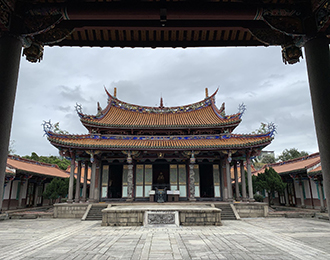
Confucius Temple in Taipei
Source: Detective of Historic sites
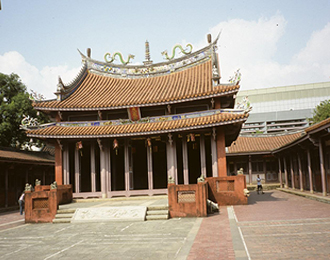
Confucius Templein Tainan
Source: Detective of Historic sites
There are now many national historic sites in Taiwan, which add a lot of colors and cultural value to the land, and we have them in our lives. Still, we often pass by them without realizing it, not knowing their existence and origin and not knowing how to protect them. In the 21st century, "global thinking, local action" has become an emerging trend and cultural policy for the implementation of historic sites in the face of the preservation of historic sites from environmental damage and threats, which is not only the government's obligation, but also our right and responsibility to participate in and enjoy cultural assets, and to achieve the ultimate goal of sustainable preservation. Let's work together to protect historic sites for cultural heritage.
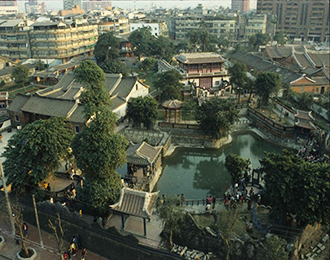
The Lin Family Mansion and Garden
Source: Detective of Historic sites

Li 's House Historic Site in Luzhou
Source: Detective of Historic sites
4. Description of Intellectual Property Rights
In this research, we interviewed Professor Li Chien-Lang, who is a famous researcher of traditional architecture in Taiwan and a well-known painter of ancient architecture, and he has won many awards for his books. He is the first person to do a perspective drawing of ancient architecture. We also interviewed Professor Li on the occasion of the 3D perspective exhibition. With the interviewee's consent, we converted the interview, photos, and images into the required file format and presented them on our website. In addition, the research contents, images, and photos on the website were studied by the team members and then presented in the promotion activities, readings, visits, interviews, and records to create the website. We value the richness of all data and continue to develop our culture in response to the needs of the technological age.
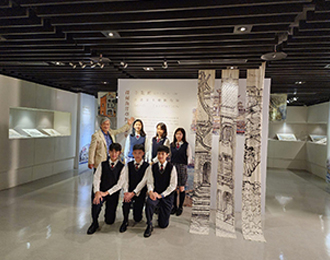
Source: Detective of Historic sites
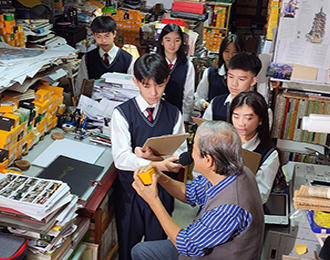
Source: Detective of Historic sites
5. Support from local figures
■ Professor Li Chien-Lang, the first person to use perspective drawing for ancient architecture, winner of the 15th Taipei Cultural Award and the 35th Executive Yuan Cultural Award
Professor at the Institute of Arts Management and Cultural Policy, National Taiwan University of the Arts, researcher of traditional Taiwanese architecture, member of the Taiwan Historic Site Review Committee, volunteer of Taiwan historic site maintenance, researcher of historic site maintenance, and painter. He is known as the “most qualified narrator” of Taiwan's historic sites. The theme of this research is based on Professor Li's extensive knowledge and experience in ancient architecture and restoration and his many years of publishing related works, including a unique, marvelous architectural perspective section of hand-drawn drawings. Professor Li led the group on a guided tour. Every place we visited was always allowed us to understand more details, from the details to open up the subtle wisdom of architecture. How fortunate we were to have the opportunity to follow Professor Li, a master of historic site architecture, as he narrated the tour, leading us to experience the stunning spatial beauty of ancient architecture, and extending our learning to promote the mission of historic site maintenance.
■ Mr. Lin Chia-Shu: Lecturer of Taiwan's cultural history and historic sites. He is from the Banqiao Lin family and is the grandson and heir of the Taiwanese famous historic and historic site researcher Lin Heng-Dao.
Mr. Lin Chia-Shu, for many years, he has devoted himself to the history and heritage of Taiwan. He has 30 years of experience as a tour leader, having visited hundreds of cities in 80 countries on five continents. His rich experience is like a mobile library, bringing the memory of Taiwan on serial guided tour of the city.
It was only through Mr. Lin Chia-Shu that the interview with Professor Li Chien-Lang, the subject of the tour, was made possible. Mr. Lin put a lot of effort into each walking tour and discussion, always thinking of the fastest and most complete arrangement in advance to obtain more time for Professor Li and the group to proceed smoothly, and always contributing his lifelong experience selflessly. He was the "best photographer" and left many photo records for the group at critical moments.
■ Ms. Hsu Ching -- Planner of Taipei City Confucius Temple Management Committee; Lecturer at Green Life Promotion Seeds, Environmental Protection Administration, Executive Yuan
Ms. Hsu is dedicated to promoting cultural assets in the environmental education field and to promoting cultural resources education to build up the concept of preservation.
Under the special arrangement of Ms. Hsu, we were able to have a glimpse of the beauty of traditional crafts such as jiaozi pottery, traditional painting, woodworking, and brick carving and to learn more about the architectural and decorative arts of the Confucius Temple in Taipei.
■ Mr. Chen Yu-Chien -- Chief Executive Officer of the Chen De Xing Hall
Chen De-Xing Hall is one of the few ancestral halls in Taipei City designated as a historic site. It was originally located where the Presidential Palace is today but was later moved to Ningxia Road.
The Pendragon Pillar in front of the hall is the first one in Taiwan with two dragons. Being inside the site, we listened carefully to Professor Li's explanation and guidance to observe the design of the roof and windows, the meaning and significance of the writing on the pillars, and the painting of loyalty and filial piety on the beams.
6. The Role of Ambassadors
As for how we want to get more Taiwanese to visit and preserve the traditional buildings and how to promote these special buildings to people outside of Taiwan, we plan to do it in two ways. Through campus promotion, be it posters, book sharing, or picture book read-along, we hope that teachers and students in our school will develop a strong interest in historic sites through these diverse presentation methods. In addition, we created a survey to find out how much people know about traditional historic sites and buildings. We also hope that this questionnaire will raise people's awareness of the importance of historic sites and their preservation so that they will not forget the importance of these historic sites to us even when they are busy. Finally, I believe that as an ambassador for the promotion of historic sites, the most crucial part is the production of the website because it can best present all of our research and the diversity and beauty of the website. The information can not only attract many viewers with our English translation of the website, but also to allow foreign friends to have a better understanding of these historic sites, even if they may not know anything about these historic sites, through this website, they can at least have a basic understanding to see the beauty of Taiwan's culture.
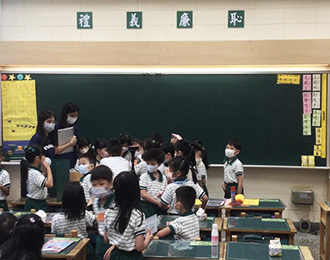
Source: Detective of Historic sites
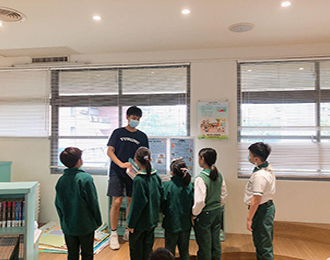
Source: Detective of Historic sites
7. Contribution to the local community
Professor Li acted as a conservator and restorer of historic sites, actively engaged in the study of Taiwan's traditional architecture, preserved cultural assets, advocated the preservation of cultural assets movement, and promoted Taiwan's traditional architectural craftsmanship. The story behind his efforts to restore the historic sites can be found in every corner of Taiwan. Because of Professor Li's efforts to promote the importance of historic sites to the public, it is now possible to see such well-preserved ancient buildings. From his books, readers also feel like they are walking into history, "walking into ancient buildings with their eyes," reflecting on how to unite as a part of this land to protect the history carried by traditional buildings and treat them kindlier.

Source: Detective of Historic sites
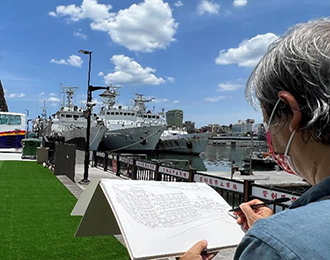
Source: Detective of Historic sites
8. Lessons learned and surprises discovered
Composed of five ninth graders and a seventh grader, a team of historic site enthusiasts was formed. In the beginning, we were not familiar with each other, and the discussions were a bit distant and unmoving. However, after time, we warmed up to each other, and we began to work at a steady pace. During this process, we have learned many different valuable lessons.
First of all, we learned the importance of teamwork. Although completing work requires everyone to do their part, only doing that is not enough. When a group member encounters a problem, others should think of a solution, when he or she encounters a bottleneck and cannot think of creative ideas, we will give him or her encouragement and support. This is not an individual contest but a team project. There is no such thing as working alone, only collaborating and striving for honor and success.
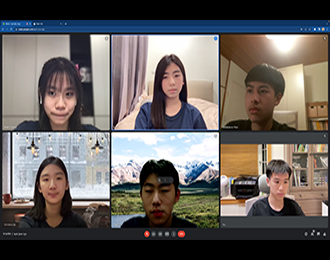
Source: Detective of Historic sites
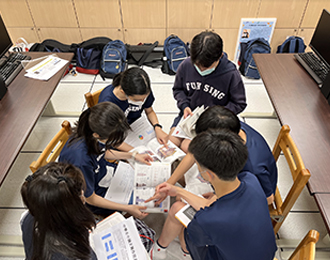
Source: Detective of Historic sites
Secondly, we learned that no one can finish a job without making any mistake. During our discussion process, Mr. Lin Hsien-Ping gave us a lot of suggestions and that we should revise each other's work. Whenever you make a mistake and correct yourself, it is a valuable experience and a vital stepping stone to success.
In addition, when we were organizing activities in school, including read-along with younger classes, posting school posters, recommending good books in the library, etc., we learned that we need to communicate with teachers and students in school to present the best results, and we had to do things independently and ask school teachers if they can allow us to organize activities on campus. We found that as long as you dare to take the first step, people are usually willing to help you, and as long as you are willing to communicate, no one will reject your offers. By adding some lively interactions during our activities and presentations, the younger students could absorb more knowledge and reach a deeper understanding of our presentations.
Lastly, through Professor Li Chien-Lang, we saw the importance of historic sites and their charm. These ancient buildings represent our culture, and each one of them contains secrets that we need to discover. The historic sites are not dead but alive, and when we visit these sites, it is like we have traveled through time and space to ancient times to understand more about the place and the people of these historic sites that we should cherish.
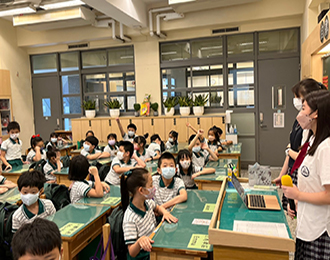
Source: Detective of Historic sites

Source: Detective of Historic sites








